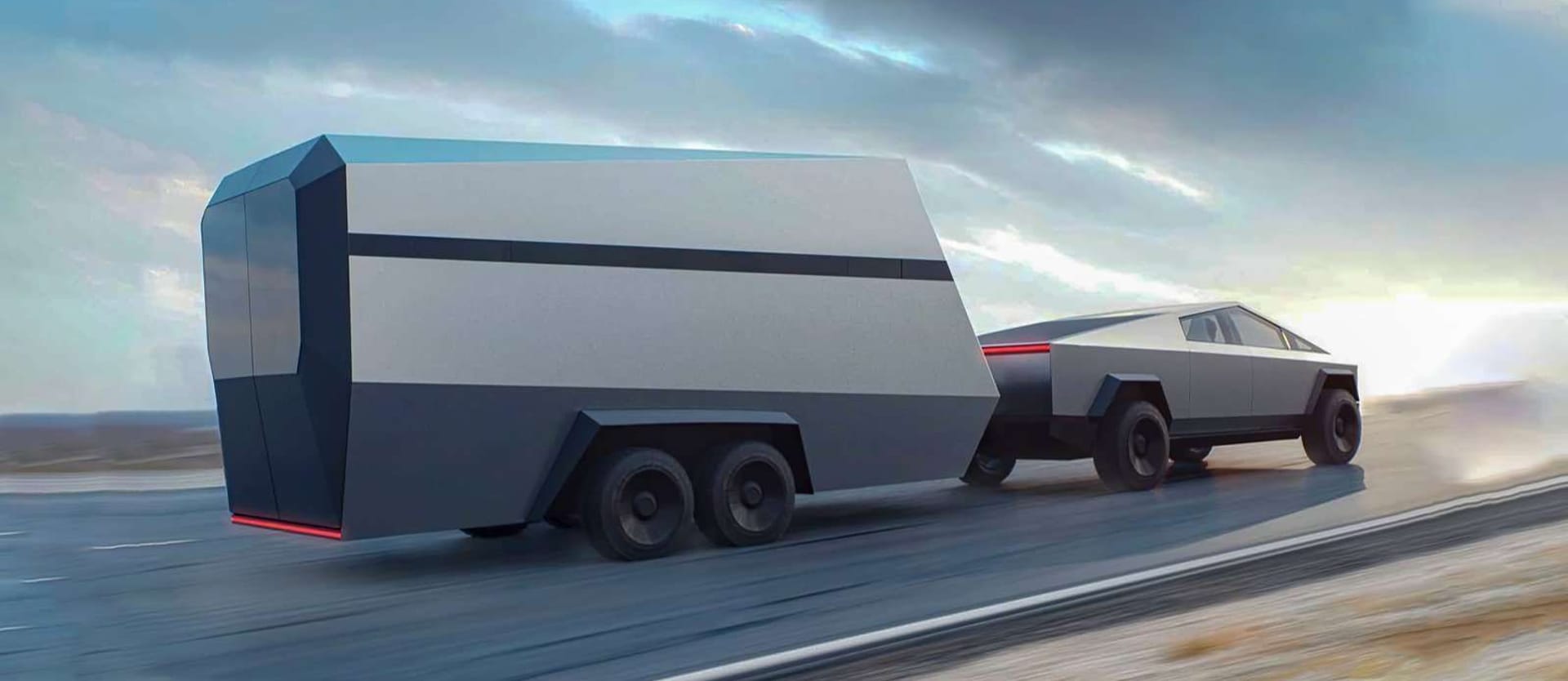This is a guest article by tech writer Hunter Amato
From robotics to marketing, technology is changing worldwide. Does that only apply to technology firms? Absolutely not!
As of 2019, the push toward modernization of productivity has hit just about every industry, with companies like Facebook going as far as to say that, come 2020, there will be more than a million unfulfilled programming jobs across all industries.
Of course, the transportation industry is no exception. A simple Google patent search will demonstrate that, in the past ten years alone, there have been countless new patents filed in the field of transportation technology. If you’re familiar with AltexSoft’s infographic concerning the main transportation tech trends and are interested in knowing, this article will provide a quick rundown of a few of the most economically important transportation technologies in 2020.
Improved Unit Load Devices
Unit Load Devices (ULDs) include anything from pallets to shipping containers. As of 2019, valued at over $1 billion, more than 900,000 ULDs in service. As demand for international goods increases to match a rise in the global population in 2020, you can expect to see those numbers rise even higher.
In the past, research into new and improved ULDs focused on the inclusion of newer materials, such as the potential for carbon fiber or hemp to replace wooden pallets or steel freight containers. However, the advent of the Internet of Things, connected home technology, and smart utilities have all made more advanced research into ULDs possible.
Recently, a new form of ULD has reached commercial viability on the open market and is rapidly growing in popularity among dispatchers. The increase in favor given to next-generation ULDs is due primarily to the inclusion of smart technology and advanced, lightweight materials that increase utility and security while also improving fuel economy and decreasing total weight.
Although these newer ULDs tend to cost more than their old-fashioned counterparts, they are expected to save money in the long run by cutting down on other costs that are no longer necessary though improving dispatch efficiency, decreasing load/unload times, and lowering the weight of the haul.
Advanced Transportation Management Systems
Transportation management systems (TMSs) have been in use in one primitive form or another, since the popularization of Ford’s Model A and Model T. However, advanced transportation management systems (ATMSs) are much newer, with usage rates projected to continue to rise through and beyond 2020.
ATMS technology provides dispatchers with a method of analyzing traffic and congestion details in real-time, enabling more accurate re-routing procedures to save money on gas, labor-hours, and other operations expenses.
Some people have called this the “eye in the sky” technique of dispatching, in no small part due to its similarity to spy movies, where the driver has access to an "eye in the sky" that relays real-time traffic data in order to catch the bad guys who are trying to get out of Dodge.
That said, the real-world applications of ATMS technology are far more important for businesses than for Hollywood. Not only does this technology enable drivers to cut down on drive time (and thus complete more jobs in the same amount of time as it would take them to complete fewer jobs in the past), it also helps drivers avoid accidents.
Solar Roadways
One of the most interesting forms of new transportation technology to know come 2020 is the solar roadway, but “interesting” doesn’t always translate to “effectual.”
The idea behind solar roadways is that, since the sun is constantly baking the asphalt, roads would be a great location for solar panels. Although the theory has caused a buzz in the scientific and transportation communities, the practice still isn’t quite capable of edging out the cost-benefit relationship that civil engineers have with standard asphalt roadways.
In 2017, China was the first country to successfully create a solar roadway, a small stretch of highway only one kilometer (3,280 feet) in length. To do so, engineers used a tri-layered composite material: transparent concrete layered over solar panels supported on the bottom by a layer of insulation material.
Although this technology stands to become a great new partnership opportunity for power generation utilities and civil engineers, it hasn’t yet proven to be of much value in the here and now.
Because of the immense amount of resources that go into the production of such a road, profit must be on a backburner, a practice that could kill even the most serious developer’s plans.
Distribution Ledger Technology
Also known as blockchain, distribution ledger technology (DLT) has been making major market moves in a variety of industries since its invention in 2008. Over the past few years, blockchain has even begun revolutionizing the way that transportation operations centers and other companies in the industry conduct business.
The benefits of DLT in the transportation industry have already enabled a large number of smaller companies to save money on paperwork, enjoy improved payment reliability, and more easily connect with clients. How? By building trust where none existed.
One of the main benefits of blockchain technology in any industry is that it adds security to uncertain transactions. When a smaller trucking company takes a job from a new client, blockchain technology improves the likelihood of verifying payment by checking the code in the wireless transfer. If it’s not secure, the dispatcher can mark the “client” as a scam and move on.
Because 90 percent of trucking companies have six trucks or less, matching trucking companies with clients without the use of blockchain has proven to be a rather inefficient procedure over the past several decades.
Previously each match used to take hours of cold calling to set up. Now, clients and truckers alike can simply look through the “ledger” of the blockchain and find actual buyers from the past. Of course, that depends on the confidentiality settings of the software used for purchasing.
Automated Flight and Freight Check-In
Companies like Delta Airlines have long since implemented digital check-in for their commercial passenger airlines. Automated flight and freight check-in is merely the next step in that technology's evolution and has already begun being adapted in a variety of industries.
This technology functions like the Internet of Things, which has been revolutionizing commercial business for nearly a decade. By networking shipping containers and other ULDs, shippers become capable of using software that automatically registers the weight, dimensions, and contents of every ULD, saving potentially hundreds of hours of labor each year.
Not only does this save money by cutting down on the haul time of drivers getting stuck in long queues at highway weigh stations, it also renders cargo misplacement as well as accidentally shipping cargo to the wrong location a thing of the past.
Simply put, when dispatchers know exactly what is in which container, where it’s been, and how much it weighs without having to check the manifest, they can move much more efficiently. Considering that much of these processes are automatic, the boost to efficiency is even more noticeable.
Oscilloscopes
An oscilloscope is less literal transportation technology and more a tool that makes the creation of transportation technology possible. Essentially, these devices enable electrical engineers and researchers to analyze countless aspects of the “health” of a circuit much in the same way that a stethoscope enables doctors to analyze the health of a patient.
Mark Gordon, CEO of Circuit Specialists, once said that oscilloscopes are the “eyes and ears of all future technology.” Ironically, these devices first came into being in 1893. Of course, those earlier models were primitive and borderline non-functional by today’s standards.
Nowadays, many oscilloscopes are entirely digital, functioning more like computerized plugins or software additions than independent devices. Digital oscilloscopes are becoming increasingly more common in research laboratories of scientists looking to develop newer methods of transportation.
Predictive Analytics and AI
By no means is it possible to predict the future, but predictive analytics functions to make future business strategy far more accurate than ever before. Predictive analytics in the trucking industry first began to take off in late 2017 and early 2018 and has since spread to countless fleets around the globe.
Essentially, predictive analytics takes back-end data collected by a shipping company’s operations and dispatch teams and uses that data to generate strategic solutions to the estimated shipping needs of the market of the near future. To put it simply, this software is capable of doing in seconds what traditionally takes hours of meetings and conference calls.
Combined with artificial intelligence, these predictive analytics become even more accurate by factoring in various mathematical equations relating to human behavior that are otherwise too difficult to map.
Companies in the freight of all vectors (land, sea, and air) have begun implementing AI technology in dispatch centers in an attempt to modernize their transportation management systems, ULD weigh-ins, and pretty much every other software-enabled aspect of their business.
Conclusion
The new year is coming and new technology is on its way to the top. Where old fashioned pallets and shipping containers, call centers full of dispatchers, and conference rooms full of stressed strategists are falling out of favor, the new technologies listed in this article are rapidly rising to replace them.
By ensuring that your company adopts as many new transportation technologies in 2020 as possible, the chances of taking your company to the next level increase exponentially.
With the technology of the future becoming the technology of the present, your choices are to adapt or become part of the past.
 Hunter Amato is a graduate of Florida State University with multiple degrees spanning a wide variety of subjects. He aims to bring his diverse knowledge to bear in his professional pursuits in a way that helps further his blossoming career as a writer. He is currently living in New York City and aspires to create and run his own software company.
Hunter Amato is a graduate of Florida State University with multiple degrees spanning a wide variety of subjects. He aims to bring his diverse knowledge to bear in his professional pursuits in a way that helps further his blossoming career as a writer. He is currently living in New York City and aspires to create and run his own software company.
Want to write an article for our blog? Read our requirements and guidelines to become a contributor.

